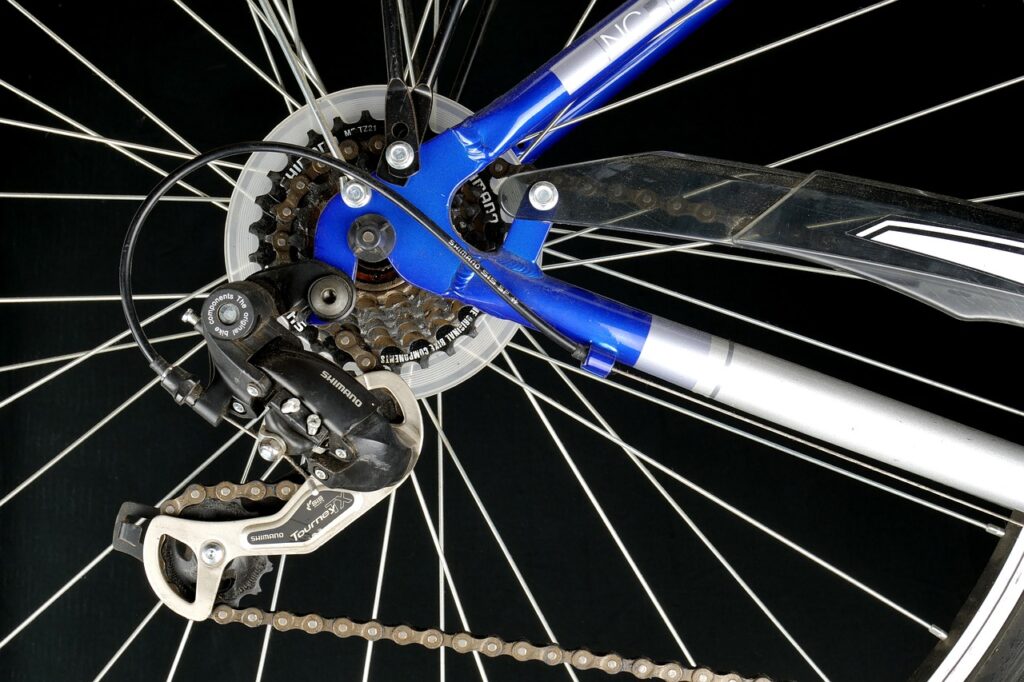Understanding the Basics of Drivetrains
When you’re getting into cycling, one of the pivotal choices you’ll face is between Shimano and SRAM drivetrains. These two brands dominate the cycling market, and for good reason. They both offer a range of products catering to different needs, from casual riders to seasoned pros. But what sets them apart? Let’s dive into the nitty-gritty of each, explore their unique features, and help you figure out which one might be the best fit for your ride.
Shimano: A Legacy of Precision
History and Evolution
Shimano has been around since 1921, and their experience shows. They have consistently refined their products over the decades, breaking new ground in technology. Initially known for producing fishing tackle, Shimano didn’t venture into cycling components until the 1950s. Over the years, they have introduced innovative solutions like the indexed shifting system, which revolutionized how cyclists interact with their bikes.
Key Features of Shimano Drivetrains
Let’s break down some standout features that Shimano brings to the table:
- Reliable Performance: Shimano components are known for their durability and smooth shifting. With a bit of maintenance, you can expect them to last through countless rides.
- Wide Range of Gear Ratios: Shimano offers a broad spectrum of gear options, allowing riders to find that perfect setup for any terrain.
- Compatibility: Most Shimano systems are interchangeable, making upgrades a breeze. It’s almost like a Lego set—build it how you want.
- Braking Systems: Shimano’s hydraulic disc brakes receive high praise for their stopping power and control. It’s like precision braking at your fingertips.
Popular Shimano Models
Shimano has several models, but here are a few that stand out:
- Shimano Ultegra: A favorite for road cyclists, it offers a great balance between performance and price.
- Shimano Deore: A staple in the mountain biking world, this drivetrain excels in durability and reliability.
- Shimano Dura-Ace: The top-tier option for professionals, this model features lightweight materials and cutting-edge technology.
SRAM: The Challenger
The Journey of SRAM
Founded in 1987, SRAM quickly transformed the cycling industry by introducing new technology and the concept of 1x drivetrains. They were the first to popularize the single chainring setup, which many mountain bikers and road cyclists have embraced since. If Shimano has the legacy, SRAM has the innovation.
Distinct Features of SRAM Drivetrains
SRAM doesn’t shy away from making its mark. Here’s what you can expect from their drivetrains:
- Simplicity: SRAM’s 1x systems eliminate the front derailleur, making setups cleaner and easier to maintain. Fewer components mean fewer headaches.
- Fast and Snappy Shifting: Thanks to their innovative design, SRAM drivetrains often provide faster shifting compared to Shimano, especially under load.
- Wide Gear Ranges: Recent models have increased the number of gears available, catering to various riding styles.
- Aesthetics: If looks matter to you, many cyclists find SRAM components have a sleek and modern design that stands out on any bike.
Notable SRAM Models
Just like Shimano, SRAM has its share of popular models:
- SRAM Red: This is their flagship road cycling model, known for being lightweight and exceptionally responsive.
- SRAM X01: An all-around mountain biking contender, offering great performance on the trails.
- SRAM Rival: A solid choice for mid-tier cyclists seeking quality without breaking the bank.
Comparing Shimano and SRAM
Shifting Performance
When it comes down to shifting, both brands have their strengths. Shimano systems often excel in smoothness, delivering shifts that feel almost seamless, while SRAM is praised for its responsiveness, especially under pressure. I’ve experienced both systems in action, and I can honestly say that it often comes down to personal preference. Some riders prefer the finesse of Shimano, while others enjoy the punchy feel of SRAM.
Ease of Maintenance
Maintenance is crucial for any cyclist. Shimano’s setup, with its extra components, can sometimes mean a bit more tinkering, especially if you are not comfortable with bike mechanics. On the flip side, SRAM’s 1x systems are usually a little easier to maintain, which is a big plus for those who want to spend more time riding and less time fixing.
Weight Considerations
If you are looking to shave off some grams, SRAM often takes the cake here with their lightweight designs. Shimano’s higher-end models like Dura-Ace can compete, but generally, SRAM components tend to weigh less in the same price bracket. In racing scenarios, every gram counts, so this aspect is worth noting.
Cost Analysis
Budget-Friendly Options
Your budget will greatly influence your choice between the two brands. Shimano tends to offer a wider range of options at various price points, making it accessible for newbies and seasoned riders alike. That being said, SRAM has some competitive models that deliver value without skimping on quality.
Premium Pricing
For higher-end models, both Shimano and SRAM are pretty comparable in price, but Shimano may offer slightly better build quality in the ultra-high-end segment. In my experience, if you plan to invest in top-tier components, make sure you test them out. Feel and fit are crucial!
The Personal Touch
As someone who has ridden both Shimano and SRAM systems, I can say that my preference shifts depending on what type of riding I am doing. For long road rides where efficiency and comfort are paramount, I lean toward Shimano. However, when hitting rocky trails, I naturally gravitate toward the simplicity of SRAM’s 1x setup. It’s like choosing between coffee and tea—depends on the occasion!
Final Thoughts
So, as you weigh your options, consider what matters most to you in a drivetrain. Both Shimano and SRAM have their loyal followers, and that speaks volumes about their quality and performance. Ultimately, the best path forward often comes down to personal preference and what feels right under your hands.
Whether you choose Shimano for its precision and reliability or SRAM for its innovative simplicity, you won’t be disappointed with either decision. Just remember to test each system if possible, and find the one that puts the most joy in your ride. Happy cycling!






